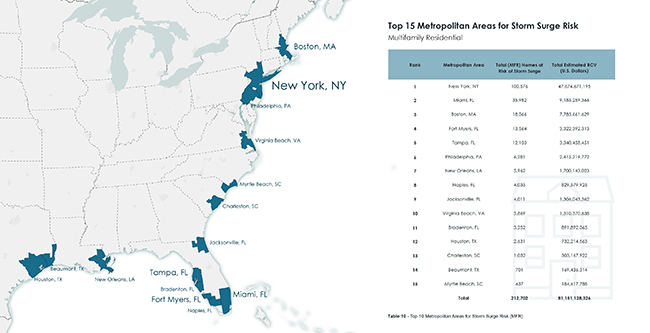Tech Roundup: AI Traffic Solution, Office 365 Companion Software, and Hurricane Info
New Act! 365 Pro Product Tier for Real Estate Industry Microsoft® Office 365 Users
Swiftpage, the provider of Act! cloud-enabled CRM and marketing automation platform, has launched a new product tier aimed at supporting the real estate industry – Act! 365 Pro in the Act! 365 platform. The Microsoft® Office 365 companion software provides Office users tools to maximize productivity, including customer management, email marketing and sales acceleration tools. Act! 365 Pro offers seamless integration with QuickBooks® and Xero™, new web forms for capturing leads and more.
“With the introduction of the new Act! 365 Pro tier in the Act! 365 platform, we are able to deliver a more robust solution to individuals and small businesses who might not be ready for all of the functionality and value found in Act! Growth Suite,” said H. John Oechsle, president and CEO of Swiftpage. “However, their business processes have graduated beyond what is offered in the base tier and require a more sophisticated solution to support their continuing growth.”
Traffic Solution Aims to Reduce Stress of Driving
When it comes to driving to appointments and showings, there are certain realities real estate professionals just accept: sudden stop-and-go traffic, surprise lane closures or ETAs that are guestimates. INRIX, a provider of connected car services and transportation analytics, just released the industry’s next-generation traffic solution that leverages artificial intelligence to deliver the most precise and actionable traffic information to date. INRIX AI Traffic provides instantaneous updates to traffic conditions and pinpoints traffic speeds in different lanes to deliver accurate ETAs on every roadway around the world.
With INRIX AI Traffic, drivers get to their destinations faster and with less stress, and businesses can make smarter decisions.
- More Accurate ETAs: INRIX AI Traffic ensures drivers will arrive at their destination on-time — and not a minute later.
- Instant Updates Get Drivers There Fast and Safe: INRIX AI Traffic updates road conditions instantaneously — from roadwork to accidents to everyday congestion — keeping road authorities and drivers one-step-ahead.
- Lane-by-Lane Precision: INRIX AI Traffic is precise enough to pinpoint the speed of traffic in different lanes helping drivers and road authorities make better decisions.
- Covers All Roads: INRIX AI Traffic has the ability to calculate speeds for every road in the world, from interstates to intersections, country roads to neighborhoods.
INRIX AI Traffic is powered by a new geospatial engine that uses deep learning to provide increasingly better and more accurate traffic analytics. The engine was trained on trillions of data points collected over a decade, including from connected cars, mobile phones, weather, historical traffic, incidents and more. Combing historical insights with real-time data, INRIX AI Traffic can identify traffic conditions with an amazing level of precision for every type of complex situation. The new processing engine also reduces latency, which means it can ingest, process and output data faster than ever before. Most importantly, INRIX AI Traffic is continually learning, so accuracy improves over time.
Hurricanes and Homes
With the arrival of hurricane season, CoreLogic has issued a report to recap the lessons learned from 2018, and offer a sneak peek of the forecasts for 2019. In particular, the report warns of the dangers of storm surge. “Though wind is generally thought of as the primary contributor of hurricane losses, this is not always the case,” wrote CoreLogic authors. “Throughout history, damage from storm surge and inland flooding has shown it can far exceed damage from wind. Superstorm Sandy, for instance, caused unprecedented levels of storm surge in New Jersey and New York.”
Evaluating storm surge risk at the local level, CoreLogic identified 15 metro areas that account for 67.5% of the total number of homes at risk of storm surge in the United States. See the map below for the at-risk metros, as well as the reconstruction cost value.

The location of future storms will be integral to understanding the potential for catastrophic damage, said CoreLogic authors, noting that a low-intensity storm in a densely populated, residential urban area can do significantly more damage than a higher-intensity hurricane along a sparsely inhabited coastline.


